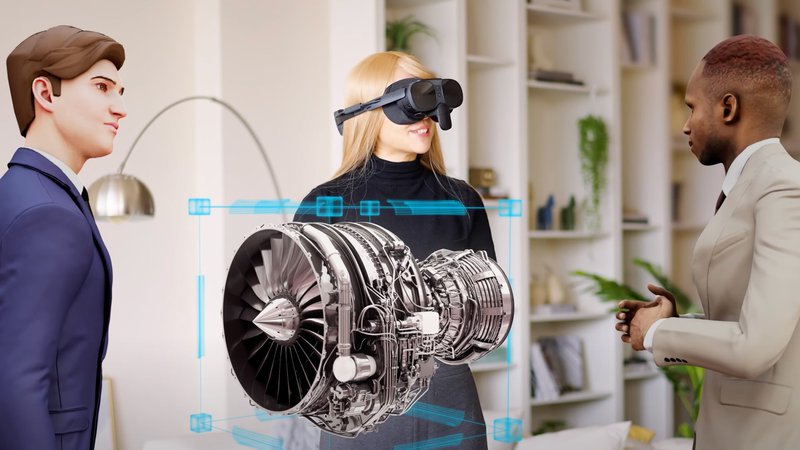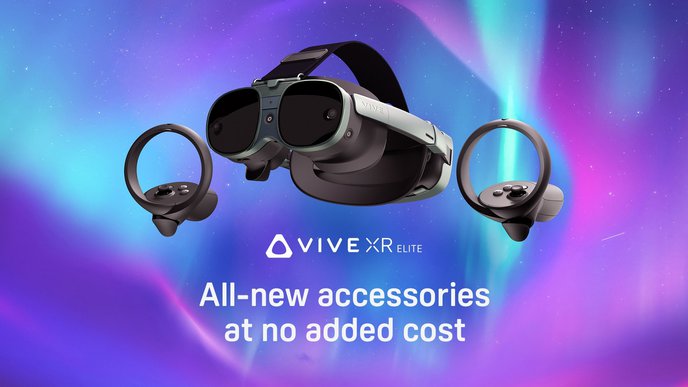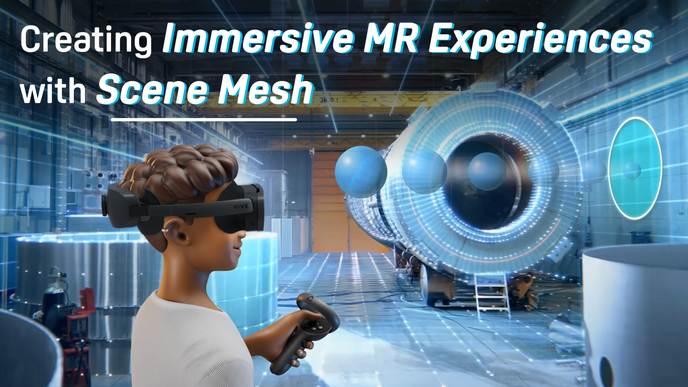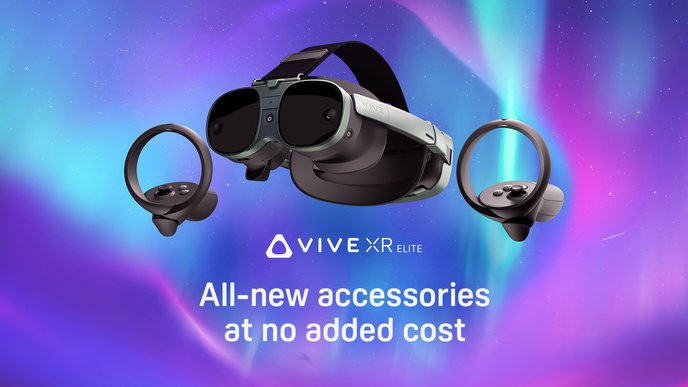What is VR Passthrough? Mixed Reality's Secret Sauce

Headsets
6-minute read
• Transform your living room into a laser tag shootout.
• Expand your multi-screen work experience.
• Visualize three-dimensional (3D) digital designs in physical spaces.
• Simulate high-risk environments and situations for job training.
These scenarios that blend the real world and digital environments are no longer just something you read about in science fiction. Mixed reality (MR) has arrived and is here to stay. Its applications have gradually entered everyday lives, from entertainment and artistic expression to a wide-range of business practices.
The secret sauce that makes this seamless crisscrossing of realities possible is a virtual reality (VR) headset's ability to "passthrough."
What is VR passthrough?
In VR, passthrough is a headset function that allows users to "see through" the displays and get a view of their physical surroundings while wearing the immersive device.
This is made possible by cameras and sensors that visually capture and record the external environment and provide a "live feed" with software assistance to correct perspective, reduce disorientation, and fill in camera blind spots.
Why is VR passthrough important?
Unless you have been living under a rock, you've heard of the metaverse and what this do-it-all, virtual world promises . While massive resources have been poured into advancing what many industry pundits project as the end game of VR, there are plenty of obstacles in the way of fully realizing such a complex and large-scale idea.
One such hurdle is overcoming existing user habits. Wearing a headset and being cut off from the real world for long periods of time is alien and uncomfortable for many.
Incorporating VR passthrough features is more than just an attempt to expand headset applications into MR; it's also a solution to making the user experience more practical and less foreign.
Passthrough functions are expected to become a must-have for VR headsets. In addition to providing total immersion, the devices will be able to keep users connected to the real world as well and still deliver visually stunning and practical experiences .
Passthrough and MR are often mistakenly categorized as technologies of the distant future. They're not. In fact, their benefits have already permeated different facets of our lives.
What are the benefits of VR passthrough?
Unleash and visualize imagination
Figmin XR is a creative tool that lets you import virtual objects or create digital visuals in physical environments. Its applications are wide-ranging, from 3D arts and interactive interior design to teaching with digital models. This is only the tip of the iceberg.
With more and more content and apps made available for people from all walks of life, the creative and entertainment potential of MR is far-reaching.
Easy real-world access
In the current state of VR, it's impractical for users to be completely immersed and cut off from their physical surroundings for long periods of time.
Whether for work or play, some habits and real-world responsibilities continue to make wearing a headset bothersome. Text messages constantly coming in. Colleagues stopping by for a quick chat. Reaching for your mug of coffee.
One of the main benefits of VR passthrough is the ability to quickly transition between VR and the physical world with just a press of a button.
After all, constantly removing the headset to check on social media or accidentally spilling water everywhere aren't ideal for new user conversion.
Situational awareness
With the advancement in inside-out tracking and the introduction of compact, standalone headsets, immersive experiences have moved from homes and offices into coffee shops, air travel, commuting on public transportation, and more.
Passthrough features enabling situational awareness are paramount for safety reasons when people are no longer just using their headsets in familiar locations.
Unmatched passthrough via camera sensors

Hardware manufacturers have made significant progress in providing high-quality passthrough experiences. The recently unveiled VIVE XR Elite all-in-one headset is one such device that has incorporated tier-leading specifications .
• 4 wide field-of-view tracking cameras enhance the tracking of hand gestures, controller maneuvers, interactions with wrist trackers, as well as a user's position in relation to other digital and real-world objects.
• The 16 mega-pixel, full-color camera is one of the highest-resolution passthrough cameras found on a commercial VR headset.
• The structured light depth sensor discharges countless invisible dots, allowing the tracking sensors to pick up depth and positional information accurately.
They combined to deliver precise interplay between real and virtual elements and in their authentic colors — the backbone of vibrant, vivid passthrough and high-quality MR.
MR and passthrough — bridging the present and future
The growth of the VR market and the metaverse's outlook will depend greatly on how fast hardware manufacturers and content developers can transform user habits.
MR blends real-world and computer-generated elements, allowing the physical and digital to coexist and interact in real time. It's in this realm where a killer application could emerge to make immersive devices irresistible to people that are still on the fence.
Whether it's expanding the workspace with multiple virtual screens, playing FPS games set in a brick-and-mortar location, or simply allowing quick access to physical surroundings to fit existing user behavior, passthrough is critical to reducing the friction of new technology adoption — the bridge between present behaviors and new ways to utilize the power of digital realities.


